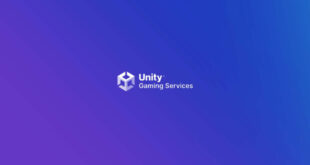It could be argued that every year the Unite story is much the same.
Fortunately for Unity CEO David Helgason, that story is one of a growing userbase, an increasingly powerful core tech, and an event that has evolved in eight years from welcoming 32 ticket-buying attendees to over 1,500.
Yet in Seattle this year, Helgason and his team had a little more to share than usual. Unity 5 may be some time away yet, and the next ‘dot release’ isn’t even quite upon us, but with the engine’s new UI system finally in public beta, a fresh acquisition fuelling a new cloud-based development service, and a demo of a mysterious timeline-based vision for Unity’s future going public, there’s much to discuss.
Addressing an enthusiastic crowd at Unite 14’s opening keynote, Helgason suggested that as the demands on developers change, Unity has had to adapt to offer ‘more than an engine’. Today, a middleware provider like Unity must help devs do more than implement pathfinding, animation and lighting effects.
“We’ve thought about ourselves as more than an engine for a really long time,” muses the CEO. “That really began formally with things like the introduction of the Asset Store in 2010. That’s certainly closer to being an engine than things like an ad service, which we announced at Unite, but we’ve always thought about democratising games development as including the whole process of making and sharing a game.”
And developing a game, says Helgason, is today split into two distinct phases. “There’s making the game,” he continues. “That is hard enough. And then there’s connecting with an audience. And by that I mean people finding a game, telling their friends, the developer making money from that, and getting data from that to improve the game. That’s what we have to help developers with if we are going to help them bring their idea to be a success, so we have to offer more than just an engine as it used to be understood.”
CLOUD AND CLEAR
The result is the newly announced Cloud Build element of Unity, which adopts the established continuous integration model of development famously favoured by web developers across the globe.
The cloud-based approach strives to save studios effort in building, testing, versioning and sharing games. It’s also a system designed to enable pan-disciplinary collaboration, along with post-release management and implementation of Unity projects, and it’s come about through Unity’s latest acquisition.
“Sometimes you have to acquire,” explains Helgason of picking up Austin, Texas outfit Tsugi. “Partnering only works in certain cases, and we do it when it’s right. We license PhysX, Speedtree, Umbra, Enlighten and so on, and that’s great. But when you need to move forward on something you are working on, a good acquisition can be like time travel.”
It’s a slightly offbeat way to explain how Tsugi became the rebranded Unity Austin studio, so Helgason takes time to explain.
“What I mean by that is that at some point we have to decide there is something we need to be really good at,” he says. “Take animation, for example. At one time we knew Unity had lacklustre animation tools. They were written by ourselves in a basement, and we didn’t really understand the problems we were addressing. Then years ago we met these amazing guys in Montreal called Mecanim.
“They know more about character animation than perhaps anyone in the industry, and they did at the time. So we looked at them, and we could have said: ‘well, in 15 years we will be as cool with animation as they are’. Or we could acquire them.
“Fortunately they were excited about joining us and about our vision. And the moment we acquired them, it was if Unity had travelled back in time 15 or 20 years, learned all there is to know about character animation, and then arrived back at the moment where we were signing the deal as a world-class expert in animation.”
When you need to move forward on something, a good acquisition can be like time travel.
David Helgason, Unity
A WARM AND GUI FEELING
The other significant news at Unite 14 was the announcement that Unity’s long in-demand new GUI system is near completion, and ready for public beta. GUI, to the layman, seems like a straightforward business. Yet for Unity it’s taken some time to get right, and the team are turning to open source thinking to help fine tune the solution.
“To create UI with good performance, good tools, simplicity and flexibility is difficult,” confirms Helgason. “So we really took our time. When we started out we built a UI system without much wisdom. People got by using it, but we realised we needed a new system.”
Never one to fear being candid about his work, Helgason admits the team trying to solve the GUI problem started and failed at least once more; maybe even twice. And as the userbase of Unity grew, the problem stayed the same. The only thing was, more people were now facing it.
“Eventually we finally got the right ideas in place, and even then it took a long time to move it to the point we’re at now,” offers the CEO. “Much longer than we expected, actually. But we’ve got there, and we’re at a really strong beta. Now we’re making it open source – and it’s not the first or only bit of Unity to be open source, but it’s a big deal that our UI system is open source.
“We love open source, and we know there are pieces of Unity that can really benefit from it. We really hope this works, and there’re other bits of Unity we’d really like to make open source. It helps us make a better product, and it helps our users make better games. That’s why we’ve gone with an extremely liberal license, which is the MIT license. It means people can take what we have done and do what they want.”
TIME FOR TIMELINES?
While further Unite announcements also revealed a new advertising and cross-promotion service named Unity Ads, significant progress with Everyplay, collaboration with Intel with a view to advancing the creation of
Android-based applications on Intel architecture, work with Google to provide full support in Unity for Google’s Android TV set top box, and a public preview of Unity 4.5 for Samsung smart TVs, it was a live demo of a new concept project that really stoked the crowd’s excitement.
The Director Project is a proposed new approach for Unity; a completely fresh interface that could potentially change the way users interact with a game engine. It might not come to be, Helgason admits, but the Director Project is – for now at least – a tangible example of how games development in Unity may function in the future.
Essentially, the approach sees Unity’s own interface ape the timeline model famous in the most dominant audio and video editing software, both professional and amateur. It is also reminiscent of some of Autodesk’s own VFX solutions, presenting a front-end that may be more familiar to non-games development creatives than the current editor.
“Director, if it happens, really is about continuing the democratisation of games development,” says Helgason. “There’s two parts to what we’re doing there. Firstly, it offers a very visual tool so users can work with timelines, sequences and so on. But also there’s some video tools that we didn’t show too much of at Unite. We don’t know exactly where it will go, except to say we’re doing all we can to offer high-level tools that allow creative professionals and designers to be involved in the development process.”
There Helgason must stop, as there are those 1,500 devs to mingle with. Most, it seems, are as much Unity fans as they are users, proudly sporting T-shirts from previous Unites.
But stop any in the corridor, or overhear conversations in the queues to sessions, and one thing is clear. The Director concept, Cloud Build platform and coming GUI system seem to have engendered enough interest to keep Unite busy for many more years.
You can find out more at unity3d.com/unite/archive/2014.

 MCV/DEVELOP News, events, research and jobs from the games industry
MCV/DEVELOP News, events, research and jobs from the games industry



